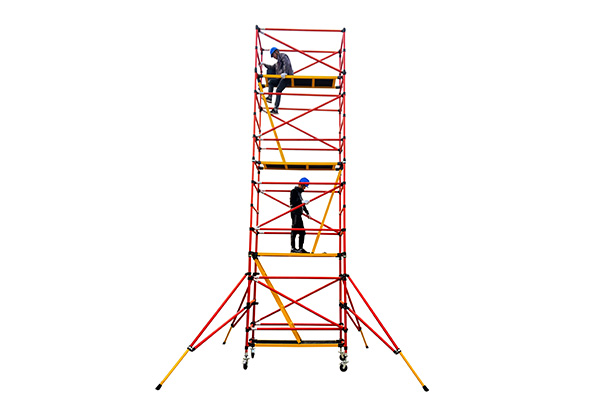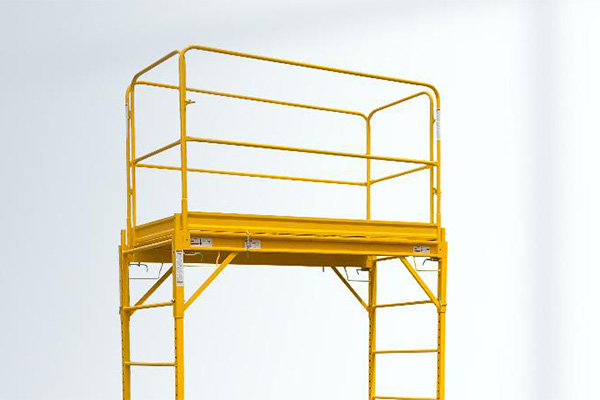What is a Baker Scaffold?
When it comes to elevated workspaces in construction, maintenance, and painting, choosing the right scaffolding system is crucial. One such versatile and widely-used scaffolding type is the Baker scaffold. This guide will break down what a Baker scaffold is, how it’s used, and why it’s a trusted choice for professionals across various industries.

Understanding the Baker Scaffold
A Baker scaffold, sometimes referred to as a “utility scaffold” or “multi-purpose scaffold,” is a type of narrow-frame scaffold designed to provide a secure and adjustable work platform. Unlike traditional scaffolding that requires a more complex setup, Baker scaffolds are typically mobile, compact, and easily assembled, making them ideal for indoor work and tight spaces.
Key Features of a Baker Scaffold
- Adjustable Height: Baker scaffolds usually allow for adjustable heights, enabling workers to reach different levels without needing a ladder or a separate scaffold.
- Mobility: Equipped with wheels or casters, Baker scaffolds can be moved quickly from one location to another. This mobility feature is essential for maximizing efficiency in tasks like painting and plastering.
- Compact Frame: Designed to fit through standard doorways, Baker scaffolds are ideal for indoor projects or areas with restricted access.
- Safety Rails and Platforms: Most Baker scaffolds have guardrails, and the platforms are made from strong, durable materials to ensure worker safety and stability.

Common Uses for a Baker Scaffold
The compact, versatile design of Baker scaffolds makes them suitable for a wide range of applications, especially for work requiring precision and ease of movement.
- Interior Painting and Decorating: The scaffold’s height adjustment and mobility make it ideal for painters working on high walls or ceilings in indoor spaces.
- Electrical and HVAC Work: Electricians and HVAC technicians often need to work at ceiling height or access difficult-to-reach areas, and Baker scaffolds offer them a convenient and stable platform.
- Maintenance and Repairs: Maintenance teams use Baker scaffolds to access different building levels without repeatedly setting up and dismantling larger scaffolding.
- Drywall and Ceiling Installation: For drywallers and installers, having a stable, elevated platform is essential, especially in larger spaces where multiple installations are required.
Advantages of Using a Baker Scaffold
- Quick Assembly and Portability: Unlike traditional scaffolding, Baker scaffolds are easy to assemble and can be moved as needed without excessive labor.
- Enhanced Safety: With guardrails and secure platforms, Baker scaffolds ensure a safer work environment, reducing the risk of falls.
- Cost-Effective Solution: Baker scaffold can be more cost-effective than other scaffolding types, especially for indoor projects.
- Ease of Access in Tight Spaces: Thanks to their compact frame, these scaffolds can be used in narrow spaces or confined areas where traditional scaffolding wouldn’t fit.

Safety Tips for Baker Scaffold Use
Although Baker scaffolds are designed for stability and ease of use, proper safety practices should always be observed:
- Secure the Wheels: Always lock the wheels before stepping onto the scaffold to prevent unwanted movement.
- Use Guardrails: Ensure the guardrails are securely in place to minimize fall risk.
- Limit Platform Height: Follow manufacturer guidelines on maximum height adjustments, as raising the platform too high may compromise stability.
- Load Limits: Be mindful of weight limits, especially when using power tools and other equipment.
How to Choose the Right Baker Scaffold
When selecting a Baker scaffold, consider the following:
- Platform Height: Choose a model with height options that align with your specific job requirements.
- Load Capacity: Look for scaffolds with load ratings that can accommodate both workers and tools.
- Caster Quality: High-quality casters will enhance mobility and reduce the likelihood of accidental movement.
- Safety Accessories: Opt for scaffolds with safety features such as non-slip platforms and sturdy guardrails.
Conclusion
The Baker scaffold is an invaluable tool for anyone requiring safe, mobile, and adaptable elevation for indoor work. With its compact size, adjustability, and enhanced safety features, this scaffolding type has become the preferred choice of professionals across a wide range of industries.
